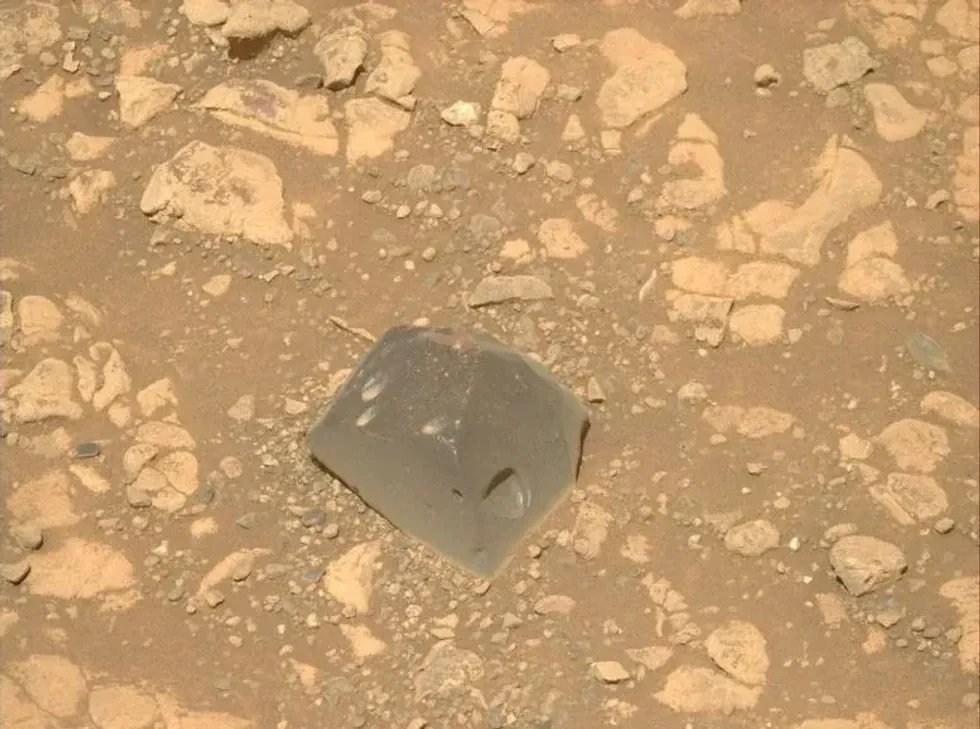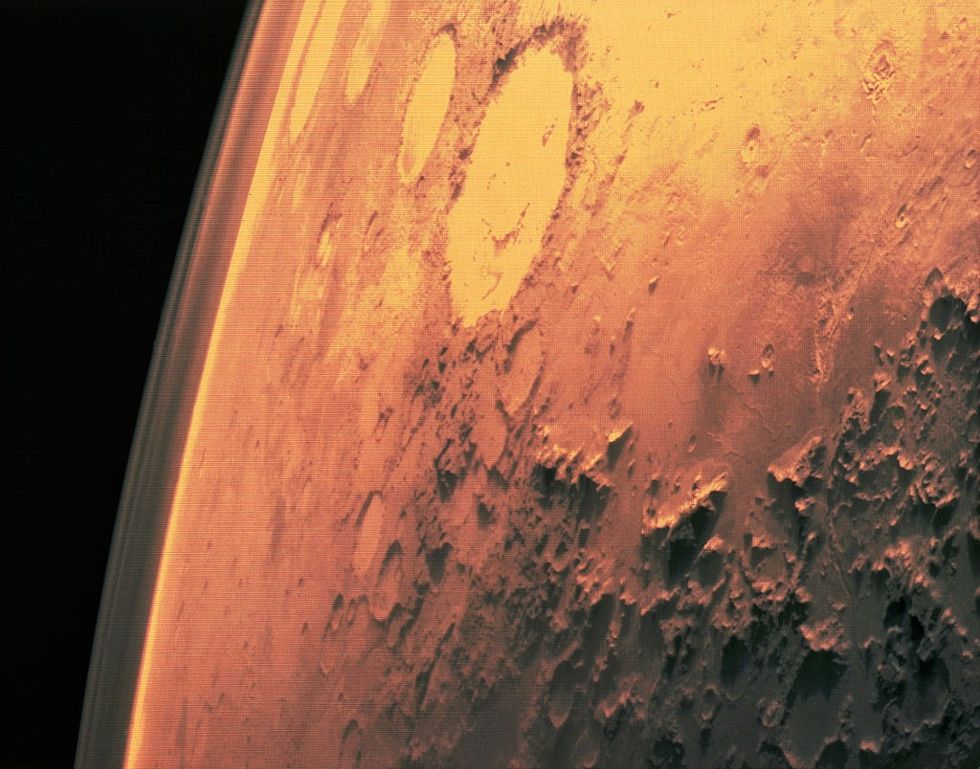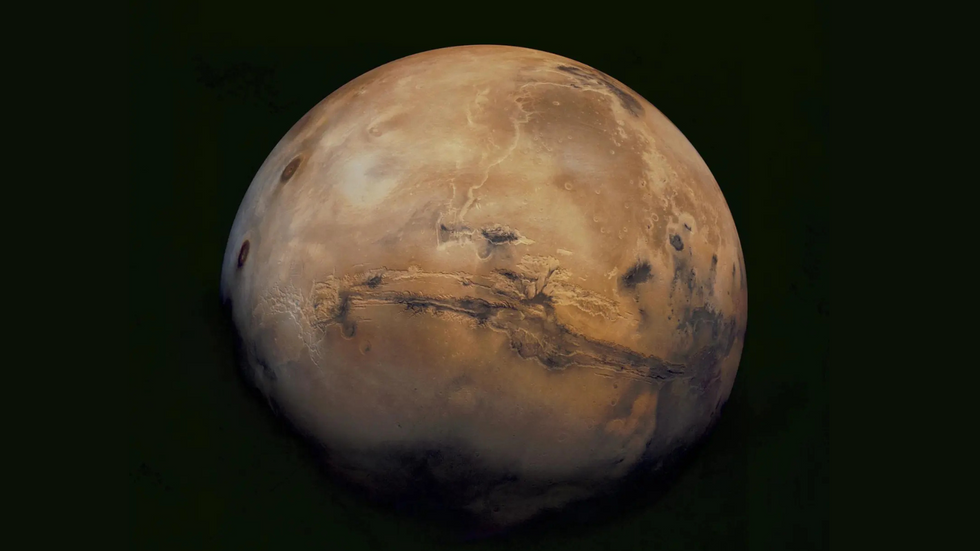WATCH: ’99.7% chance of alien life’, top scientist declares as three signs give cause for optimism: ‘That is good news’
GB News
The dark, angular formation remains an anomaly on the Martian landscape
Don't Miss
Most Read
Latest
Nasa scientists have discovered a mysterious rock formation on Mars dubbed "Skull Hill" that has left researchers puzzled about its origins.
The unusual feature was spotted by the Perseverance rover on April 11 as it descended Witch Hazel Hill in the Jezero Crater.
Scientists believe the 45-kilometre-wide basin once contained a lake.
What makes the discovery particularly intriguing is how dramatically different it appears from its surroundings.

'Skull Hill' has left scientists baffled
NASA/JPL-Caltech/ASU
While the surrounding Martian landscape is predominantly light-coloured and dusty, Skull Hill stands out with its distinctive dark appearance.
The rock formation is angular and covered in tiny pits, giving it a distinctive appearance that suggests it might have been "dropped there from somewhere else", according to Margaret Deahn, a PhD student at Purdue University working with Nasa.
Due to the differences between the rock and the surrounding landscape, "Skull Hill" appears to be completely out of place in its current location.
The rover has encountered several other interesting rocks in the area that may also have originated elsewhere.
LATEST DEVELOPMENTS:
 The surface of MarsGetty
The surface of MarsGettyScientists refer to such displaced rocks as "float", suggesting they've been transported from their original locations.
The team has developed several theories about how Skull Hill might have arrived at its current location.
One possibility is that it was moved by erosion, an ancient impact, or another powerful natural event.
Initially, scientists considered it might be a meteorite.

Mars
NASAHowever, after using Perseverance's laser-powered SuperCam to analyse a nearby similar rock, Nasa ruled this out.
The rock didn't contain the high levels of iron and nickel typically found in space rocks.
Another theory suggests Skull Hill could be an igneous rock formed when lava or magma cooled millions or billions of years ago.
"Luckily for us, the rover has instruments that can measure the chemical composition of rocks on Mars," Deahn said.
This advanced technology allows Nasa to conduct detailed analysis of the mysterious formation.
The Perseverance rover is equipped with sophisticated tools specifically designed for examining Martian geology.
Deahn indicated that more tests are likely to come to determine the rock's origins.













